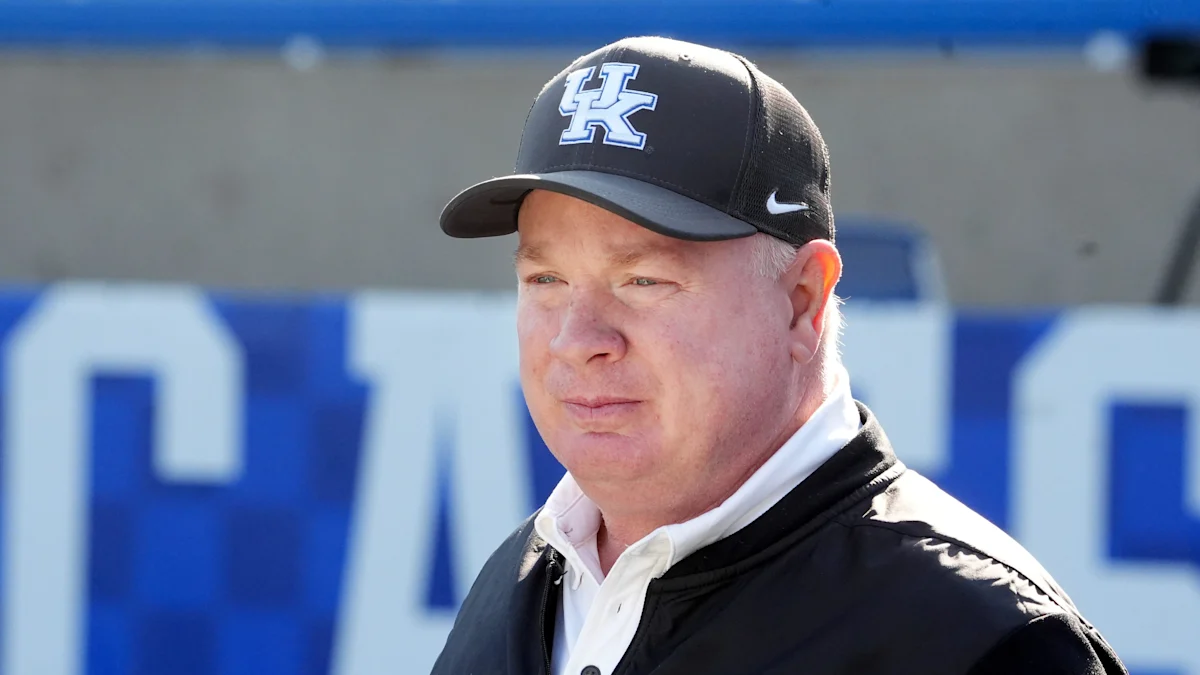According to Paul Finebaum, Kentucky football is one of the two worst programs in the Southeastern Conference.
Paul Finebaum, a prominent voice in college football and an authoritative figure on all things SEC, recently made waves when he stated that Kentucky football is one of the two worst programs in the Southeastern Conference. His assertion, blunt and unwavering, has ignited fierce debate across the college football landscape, especially among fans of the Kentucky Wildcats, who have seen their program undergo a significant transformation in recent years under head coach Mark Stoops. Finebaum’s opinion, while certainly provocative, is rooted in a long history of mediocrity associated with Kentucky football—a history that is hard to ignore, even in the face of recent progress. However, the implications of his statement go far beyond just historical performance; they touch on perceptions, expectations, and the harsh realities of competing in the SEC, the most competitive conference in college football.
For decades, Kentucky football has lived in the shadow of the university’s basketball dynasty. While Rupp Arena buzzed with energy and national title dreams every winter, Kroger Field often felt like an afterthought. This disparity between the programs shaped the way Kentucky football was viewed, both locally and nationally. The Wildcats’ gridiron history is littered with losing seasons, coaching instability, and fleeting moments of success that rarely translated into sustained excellence. When Paul Finebaum called Kentucky one of the two worst programs in the SEC, he was undoubtedly drawing on this broader context—a program that for years failed to compete on the same level as its conference peers. Yet the conversation must also acknowledge the strides the program has made in recent years, complicating any blanket assessment of its current status.
Mark Stoops, who took over the program in 2013, has been instrumental in altering the trajectory of Kentucky football. Under his leadership, the Wildcats have posted winning records, earned bowl victories, and even flirted with contention in the SEC East. Stoops built a team culture centered around player development, toughness, and discipline, traits often associated with successful SEC programs. He turned Kentucky into a team that could beat the likes of Florida and Tennessee—an unthinkable feat in previous decades. The Wildcats even had a 10-win season in 2018 and followed that with additional bowl appearances, suggesting that the program was moving in the right direction. Yet despite these milestones, Finebaum’s statement casts doubt on whether these achievements are enough to shake the program’s reputation as an SEC bottom-dweller.
What Finebaum appears to be getting at is not necessarily a critique of Kentucky’s recent seasons, but rather a broader commentary on the program’s overall standing within the SEC hierarchy. The conference includes perennial powerhouses like Alabama, Georgia, and LSU—programs with national titles, deep recruiting pipelines, and vast resources. Even schools like Auburn, Florida, and Texas A\&M command more historical and institutional football clout than Kentucky. In such a competitive environment, sustained success is not just measured by bowl eligibility but by championship contention, NFL Draft presence, and national relevance. From this perspective, Kentucky still lags behind its peers. The Wildcats may be competitive, but they are not contenders. They win games, but they don’t win the big ones. They develop players, but rarely produce first-round picks. These are the metrics by which SEC programs are judged, and it is perhaps this reality that informs Finebaum’s unflinching assessment.
Furthermore, Kentucky’s recruiting rankings often reflect its second-tier status within the conference. While Stoops and his staff have done well to find hidden gems and coach them up, the Wildcats seldom crack the top ten nationally in recruiting and usually fall behind most of their SEC counterparts. In a conference where recruiting is the lifeblood of success, this disparity places Kentucky at a consistent disadvantage. The Wildcats may punch above their weight, but the weight class they belong to is still not on par with the elite programs. Even when they manage to secure a talented class, it’s often diluted by transfers, attrition, or lack of elite quarterback play—another factor that perpetually hampers their ability to take the next step.
Adding to Kentucky’s challenges is the recent expansion of the SEC, which now includes Oklahoma and Texas—two programs with rich football traditions and significant resources. Their inclusion only deepens the talent pool and raises the competitive bar, making it even harder for programs like Kentucky to gain a foothold in the upper echelons of the conference. Finebaum’s remarks could be seen as a preemptive verdict on Kentucky’s chances in this new-look SEC: if they struggled to consistently compete in the previous iteration of the conference, what hope do they have now against even stiffer competition?
Still, there is a case to be made that Finebaum’s characterization is overly harsh, especially when compared to other programs that have struggled far more in recent years. Vanderbilt, for instance, is often the consensus pick for the worst program in the SEC, with a long history of futility, poor facilities, and minimal fan support. South Carolina has also faced its share of struggles, failing to sustain success after the Steve Spurrier era. Missouri, while having some success early in its SEC tenure, has largely been irrelevant on the national stage in recent years. Even Mississippi State and Arkansas have faced prolonged periods of underachievement. In this light, Kentucky seems at worst a middle-of-the-pack program that has shown tangible signs of improvement. Perhaps what irks Finebaum is not where Kentucky stands today, but how little upward mobility it seems to have within the unforgiving structure of the SEC.
The expectations for Kentucky football have also changed over time. What once constituted a successful season—six wins and a bowl berth—is now seen by some as the bare minimum. Stoops has raised the bar, and with that comes increased scrutiny. The Wildcats are no longer content to merely be competitive; they want to win big games, upset ranked opponents, and be in the conversation for division titles. And yet, these goals remain elusive. The program often falters against top-tier opponents, struggles to finish strong in November, and rarely finds itself in the national spotlight. This inconsistency reinforces the perception that Kentucky is not ready to ascend beyond its historical limitations, giving fuel to critics like Finebaum.
Another layer to this debate involves the infrastructure around the football program—facilities, investment, fan support, and media presence. Kentucky has invested in its facilities and coaching staff, signaling a commitment to elevating the program. However, these upgrades still lag behind those at schools with larger budgets and deeper football traditions. Fan support, while passionate, is often overshadowed by the basketball program, creating a dual identity that hampers football’s ability to fully capture the state’s sporting imagination. While other SEC programs revolve entirely around football, Kentucky remains a basketball-first school trying to carve out a space for football success. This cultural reality is not easily changed, and it influences both recruiting and perception.
Despite these hurdles, there is still reason for optimism. Kentucky has proven that it can win games, attract competent coaching talent, and develop players who succeed at the next level. The program is no longer a guaranteed win on any team’s schedule, and Stoops has made it clear that he intends to keep building. The fan base is growing more engaged, attendance is improving, and the players believe in the system. In many ways, Kentucky has done more with less than almost any program in the country, and that resilience should not be discounted.
Ultimately, Finebaum’s assessment of Kentucky football as one of the two worst programs in the SEC is both a challenge and a critique. It is a reminder of how far the program still has to go and a reflection of the conference’s brutal standards. It is also a call to action, one that Kentucky’s coaches, players, and fans must take seriously if they hope to change the narrative. While Finebaum’s words may sting, they are rooted in a tough love that defines SEC football—a world where only excellence is rewarded and where history, culture, and performance are always under the microscope.
Whether or not one agrees with Finebaum, the debate he sparked serves as a barometer for how Kentucky is viewed by the broader college football world. It exposes the tension between progress and legacy, between hope and skepticism. Kentucky football is at a crossroads, one where it can either accept its place or continue striving to redefine it. The road ahead will not be easy, but the opportunity is there. And perhaps, just perhaps, statements like Finebaum’s are exactly the kind of motivation the Wildcats need to prove that they belong.



